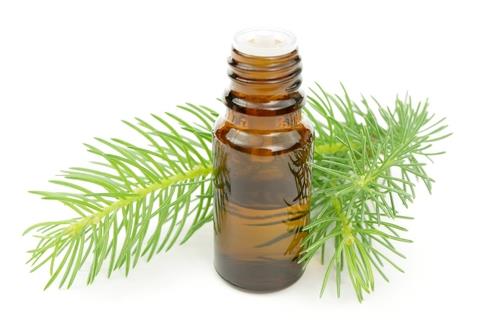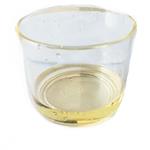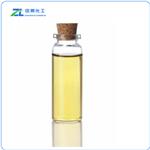Description
Dwarf pine needles oil is an essential oil obtained by steam or steam-water distillation of the comminuted needles and twigs of dwarf pine. Main constituents of dwarf pine needles oil include l-α-pinene, β-pinene, l-limonene, dipentene, l-phellandrene, aldehydes, various esters, and alcohols. Dwarf pine needles oil has antiphologistic, antirheumatic, antiseptic, antineuralgic, antiviral, antiscorbutic, deodorant, decongestant, diuretic, disinfectant, expectorant, stimulant, tonic, and antifugal properties.
Dwarf pine needles oil can be used to help clear mucus from the lungs. It is used as a flavoring agent in foods and beverages and as a flavoring and fragrance in cough and cold medicines, vaporizer fluids, nasal decongestants, and ointments to relief pain. It can be used as fragrance in soaps and cosmetics. It is also added into ointments and applied directly to the skin to prevent skin infections.

References
[1] http://www.webmd.com
[2] http://www.essentialnaturaloils.com/dwarf-pine-oil
[3] George A. Burdock (1996) Encyclopedia of Food and Color Additives, Volume 3
Chemical Properties
The essential oil is obtained by steam or steam-water distillation of the comminuted needles and twigs in yields of 0.3
to 0.4%. The oil has a pleasant aromatic odor and bitter, pungent taste.
Chemical Properties
Dwarf-pine-needle oil is obtained in Austria (Tyrol) and other
mountainous areas of Central and Southeast Europe by steam distillation of
fresh needles and twig tips of Pinus mugo Turra ssp. mugo and ssp. pumilio
(Haenke) Franco. It is a colorless liquid with a pleasant, balsamic odor.
d
2020 0.858–0.868; n
20D 1.474–1.478; α
20D ?15 ° to ?7 °; solubility: 1 vol in
≤10 vol of 90% ethanol. Content by GC: α-pinene 10–30%;β-pinene 3–14%; 3-carene 5–25%; β-phellandrene 8–17%; limonene 8–14%; bornyl acetate 1–5%.
Physical properties
It is a clear, almost colorless, mobile liquid.
Occurrence
Found in the branches and adherent leaves of P. mugo Turra var. pumilio (Fam. Pinaceae) (Guenther, 1952).
Preparation
By steam distillation of the branches and leaves of P. mugo Turra var. pumilio (Guenther, 1952).
Definition
Extractives and their physically modified derivatives.
Essential oil composition
Main constituents include l-α-pinene, β-pinene, l-limonene, dipentene, l-phellandrene, aldehydes, various
esters, and alcohols.
Health effects
Pine needle essential oil is the essential oil extracted from pine needles. This oil is rich in unsaturated fatty acids and is an important ingredient for "melting" cholesterol and removing impurities in blood vessels. It can effectively remove excess cholesterol in blood vessels and play a great role in reducing blood viscosity. At the same time, it can also improve the elasticity of blood vessels, make blood flow smooth, it can regulate blood pressure, and has antihypertensive effect on hypertensive patients. Pine needle essential oil is also a secret factor for two-way regulation of blood pressure. Pine needle oil has inhibitory effect on the proliferation of gastric cancer SGC-7901 cells, and the inhibitory effect is significantly enhanced with the increase of pine needle oil concentration.
Pharmacology
In man. Pinus pumilio oil increased bronchial secretions (Thomas, 1958). A dose
of 500 mg/kg was reported to have no effect in vivo on the metabolism and pharmacological activity
of pentobarbitone (25 mg/kg) in rats or in vitro on the metabolism of amidopyrene, p-nitroanisole
and aniline by rat liver (Jori et al. 1969). Intravenous injection of the oil dissolved in sorbitol
monostearate water caused no toxic effects in warm-blooded animals and large doses caused no
changes in blood pressure, but it showed digitalis-like action of the isolated toad heart (Primavori.
1960).
Safety Profile
Mildly toxic by
ingestion. A human skin irritant. When
heated to decomposition it emits acrid
smoke and irritating fumes.
Metabolism
Following immersion of young pigs and one human subject for 30 min in baths containing 150 ml of a pine-oil mixture (Fichtennadel-Latschenkiefer?l. Kneipp) in 450 litres of water, a- and ?-pinene and limonene (components of Latschenkiefer?l) were detected in the exhaled air within 20 min, reaching maximum levels 50-75 min after the start of the bath and remaining detectable after 1 day (R?mmelt, Zuber. Dirnagl. & Drexel. 1974).







